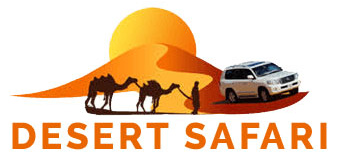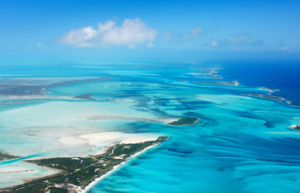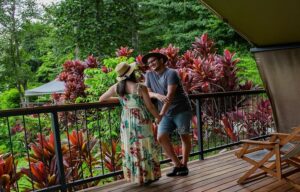Trek to Base Camp: Total tour package guide for the Everest Region

Trekking to Everest Base Camp (EBC) is not simply an exceptional open air adventure—it’s a transformative travel combining physical challenge, social submersion, and famous mountain view. Whether you select the classic Hike to Everest Base Camp, encounter the top through the Everest Base Camp trek returned by Helicopter, or take after a customized EBC trek schedule, this endeavor offers a once‑in‑a‑lifetime opportunity to tour the “Roof of the World.”
This guidely jumps profoundly into each viewpoint of an Everest Base Camp tour package—from why you ought to trek to EBC, to arrangement, each day on the path, and the emotional helicopter return. You’ll find how to make your trek secure, significant, and unforgettable.
Trek to the Roof of the World
However, coming to it isn’t almost planting another hail on the best; it’s about strolling through a few of this planet’s most breathtaking scenes: from lavish rhododendron timberlands and yak-grazed knolls to desolate moraine areas and windswept snow capped edges. Each step drenches you in mountain magnificence, reverberating the ways of amazing Hikeers like Sir Edmund Hillary and Tenzing Norgay, and uncovers stories woven into the inaccessible Sherpa towns that flourish here.
Why trek to Everest Base Camp?
Peak Display without Summits
You get inside touching separate parts of Everest without specialized hiking.
Physical & Mental Challenge
The high-altitude trek tests your continuance, teaching, and adaptability.
Cultural Depth
Unforgettable Customs & Rituals
Sunrise from Kala Patthar and ceremonies at Tengboche Religious community are sincerely powerful.
Aerial Exit Possible
Combine trekking nobility with helicopter comfort and spectacle.
Best Time of Year to trek to Everest Base Camp
These periods offer:
- Clear sees of Everest and encompassing peaks
- Stable, dry climate perfect for trekking and flying
- In spring, blossoming rhododendrons and guide warmth
- In harvest time, fresh discuss with less cloud cover
Winter treks are conceivable but greatly cold; rainstorm season brings rain-heavy dangers and discourages sees. Most trustworthy tour packages center on spring and harvest time to maximize security and visibility.
Descending Securely from Base Camp to Lukla
While rising the path is the essential challenge, the plummet regularly demonstrates more overwhelming. On-foot plummet over tough territory can strain knees and joints, particularly after days at elevation. Here the Everest Base Camp trek returned by helicopter revolutionizes the experience—allowing trekkers to Hike up, splash in the triumph at Base Camp or Kala Patthar, and at that point fly down in 30–45 minutes. Maintain a strategic distance from landscape weakness, creaky joints, and monotonous scenes, and supplant it with astounding airborne sees of the Khumbu Icefall and Everest itself as your finale.
Understanding Elevation Affliction and Security Precautions
Altitude presents the most noteworthy chance. With oxygen levels dropping essentially over 3,000 meters, Intense Mountain Affliction (AMS)—manifesting as cerebral pains, queasiness, or dizziness—can obstruct or crash your summit endeavor and undermine safety.
Minimize chance by:
- Hiking steadily and minimizing elevation pick up per day
- Scheduling rest/acclimatization days (regularly at Namche Bazaar and Dingboche)
- Staying hydrated and dodging alcohol
- Recognizing indications early, and plummeting if needed
- Hiring neighborhood guides who screen wellbeing and give secure responses
Packages counting helicopter departure can be lifesaving. Administrators may organize clearing for moderate-to-severe elevation cases, giving trekkers peace of mind.
Physical Wellness Required for the Trek
Although EBC is not a summit Hike, it requests strong cardiovascular wellness, continuance, and leg strength.
Recommended planning includes:
Hiking with rise pick up (2–4 hours, 3–4 times weekly)
Staircases and Hiking stairs
Weighted rucksacks (6–10 kg practice)
Cross-training: running, cycling, or swimming
Exercises for legs/core (thrusts, squats, planks)
February to March–September preparing builds strong continuance and high-impact capacity
If you can comfortably Hike 3–4 hours with a stack, you’ll likely oversee the trek, particularly with elevation acclimatization days.
Training for the Everest Base Camp Trek
A 8–12 week preparing arrange might include:
Weeks 1–4: cardio emphasis—running/cycling, 4× per week
Weeks 5–8: include Hiking with pack, weight, inclines
Weeks 9–12: full-day Hikes, back-to-back end of the week treks, high-intensity intervals
Completing multi-day Hikes reenacts path weariness viably. Hone rapidly amid climate changes, trails, and uneven terrain.
Permits and Documentation Required for the Trek
Trekking requires key permits:
TIMS Card (Trekkers’ Data Administration System)
Sagarmatha National Stop Permit
Khumbu Country District Allow (supplanted ancient nearby permits)
Most EBC tour packages give full allowable bolster. Travelers ought to give 4 passport-style photographs and visa duplicates. Keep allowing duplicates convenient amid officer checks.
Food and Drinks Accessible on the Trail
Teahouses offer shockingly feeding menus:
Dal Bhat (rice & lentil curry) with vegetables—refillable and staple
Momos, noodle soups, pasta, browned rice, porridge, pancakes
Hot drinks: tea, coffee, hot chocolate, ginger-lemon-honey
Water: bubbled, sifted, or bottled; decontamination tablets or SteriPEN recommended
Snacks: Bring vitality bars, path blend, or electrolyte tablets
Food costs rise at height, but healthy, basic dinners control your trek.
Cultural Experiences with the Sherpa People
Sherpa people—brothers and sisters of numerous Everest expeditions—offer warmth, versatility, and convention. Trekking through their towns (Phakding, Namche Bazaar, Khumjung, Pangboche) implies connection with old Buddhist societies. Homestays and tea-time discussions uncover experiences into mountain life and the legacy of Sherpa Hikeers and guides.
Buddhist Impact on the Everest Region
Buddhism significantly shapes the region. Supplication banners vacillate all over. Mani dividers, stupas, and little sanctums line trails. In the Tengboche Religious community, roosted underneath Ama Dablam, you can listen to ministers chant and observe sacrosanct customs. These social encounters bring peace, reflection, and reverence—your trek is otherworldly as much as physical.
Everest Trekking with a Nearby guide or Porter
Hiring a guide and/or doorman is emphatically recommended:
Guides: Give acclimatization bolster, course route, security observing, interpretation, and social translation. Guided packs decrease elevation dangers and streamline logistics.
Porters: Carry heavier equip (up to 20–25 kg), liberating you to trek comfortably with a light daypack
Nepal’s trekking laws require trekkers to enlist guides in bunches of two or more—plexing security and work openings inside the neighborhood economy.
Language and Communication in the Everest Region
Nepali is broadly spoken; Sherpa tongues and Tibetan variations are common in towns. Trekkers will not confront communication obstructions much appreciated to taught guides and teahouse staff. Essentials like “Namaste” (hi) and “Dhanyabad” (thank you) go far in building goodwill. In crises, guides carry fawning phones or radios to facilitate look and protect or evacuation.
Money Things: ATMs and Cash on the Trek
Namche Bazaar—typically almost Day 2 or 3—has the final ATM. Over that, cash-only trekking begins.
Plan ahead:
Withdraw adequate Nepalese Rupees (~$30–$50/day for dinners, lodging, toiletries, snacks, shower)
Equipment rentals, web, and charging are extra
Tipping for guides and doormen (approx. 10–15%)
Solid nearby money guarantees a stress-free trek past Namche
Weather Conditions in Diverse Trekking Seasons
Weather shifts dynamically:
Spring & Harvest time: Clear skies, steady temps, solid helicopter flights
Winter: exceptionally cold, potential snow; less trekkers, more solitude
Monsoon (June–August): Rain, avalanches, sloppy trails, moo visibility
Seasonal alterations required for equipment (rain/winter) and height contemplations. Helicopter administrators tend to maintain a strategic distance from summer due to fly delays.
Conclusion:
The EBC trek, whether on foot or returning through helicopter, offers a capable combination of challenge, culture, and common splendor. Strolling through the heart of the Himalayas interfaces you to its scenes, conventions, and the mountaineering bequest carved here for centuries. The alternative to fly back gives consolation, ease, and all encompassing closure. A well-structured tour package guarantees your travel is secure, backed, and profoundly memorable—from takeoff in Lukla to that triumphant helicopter ascent.
With astute preparation—fitness preparing, elevation mindfulness, suitable adaptation, social understanding, and monetary readiness—you’ll not fare totally this trek, but honor its meaning. When you arrive in Kathmandu or Lukla after the helicopter flight, you’ll carry more than photographs and elevation gain—you’ll hold mountains in your heart.





